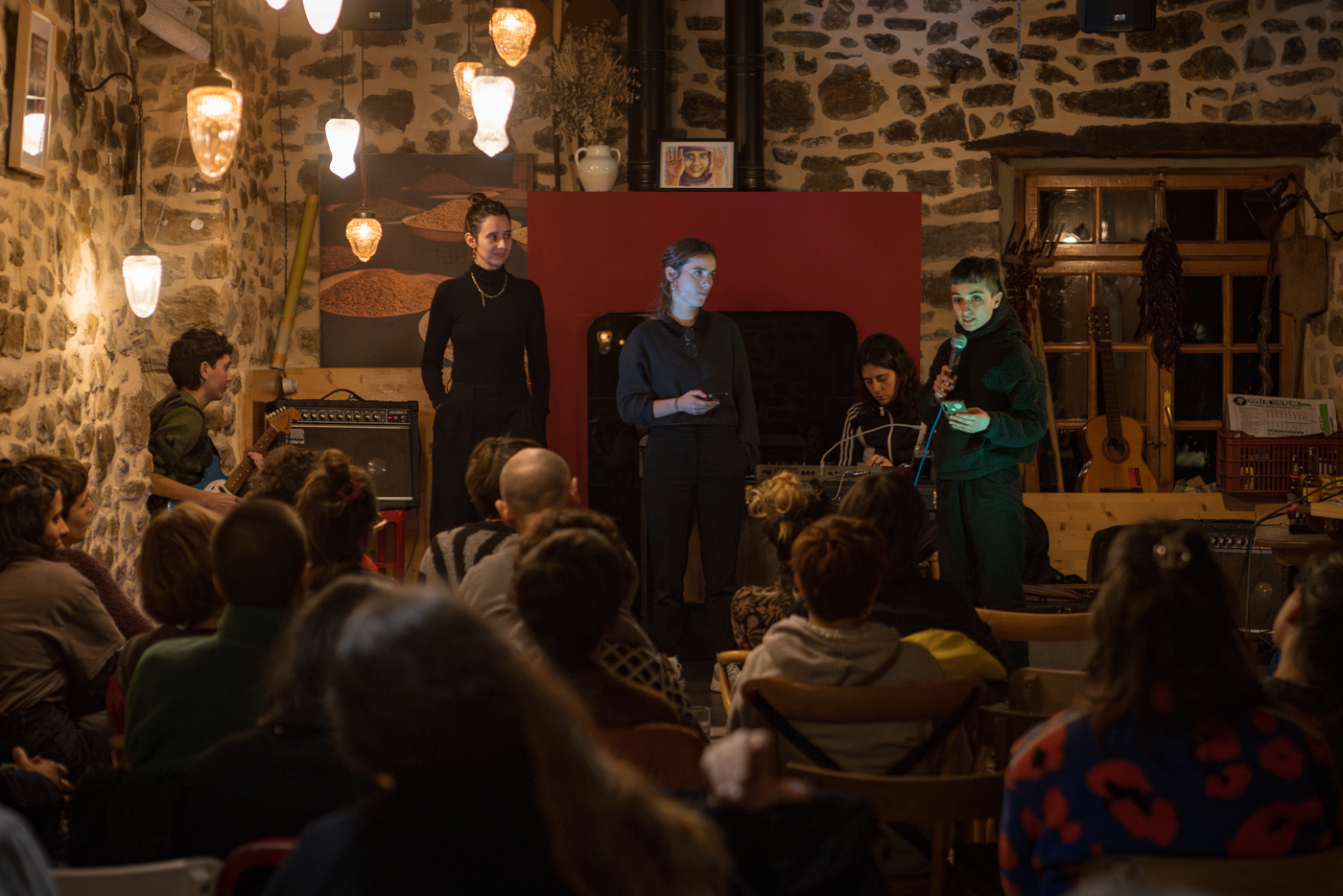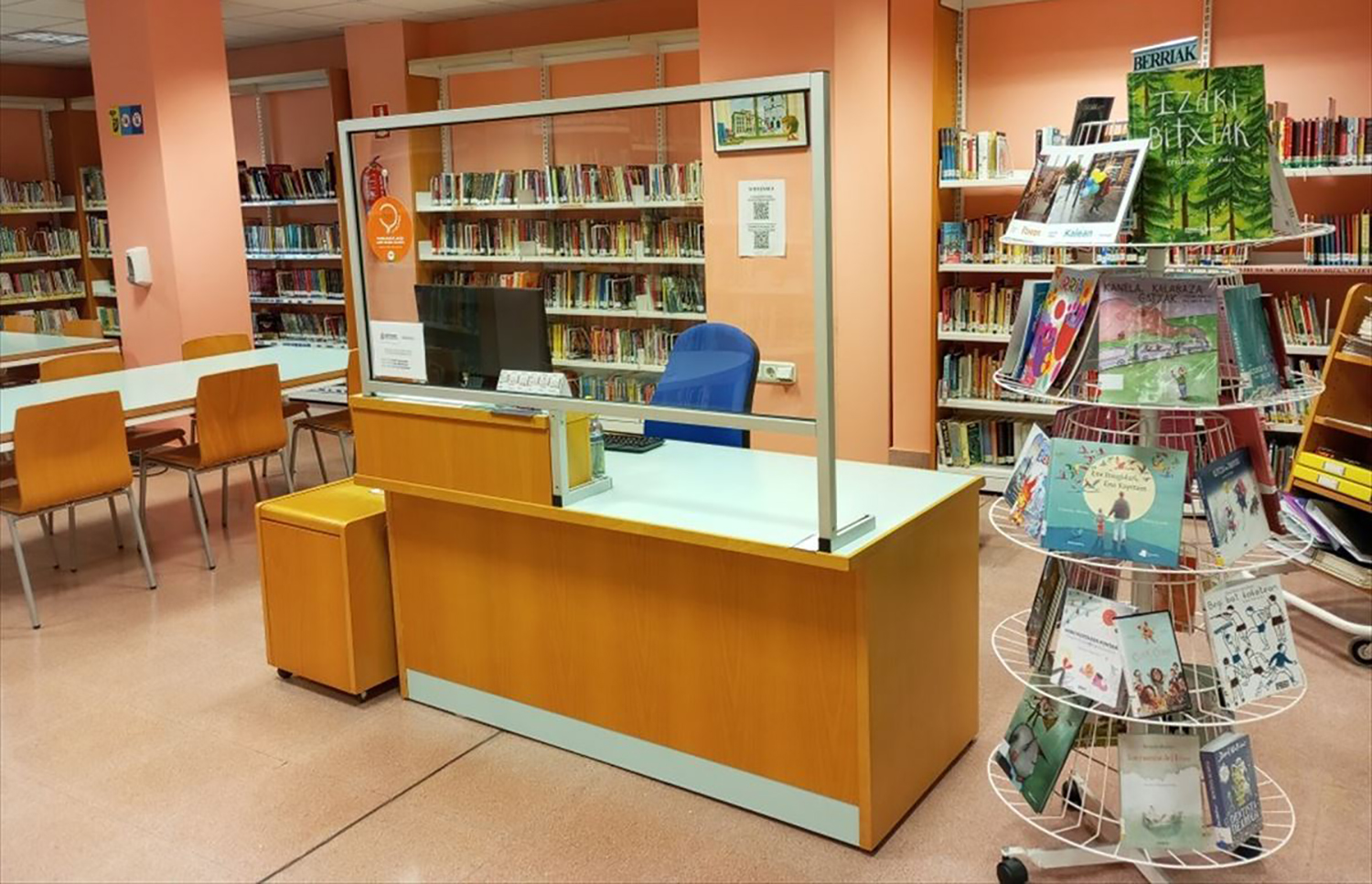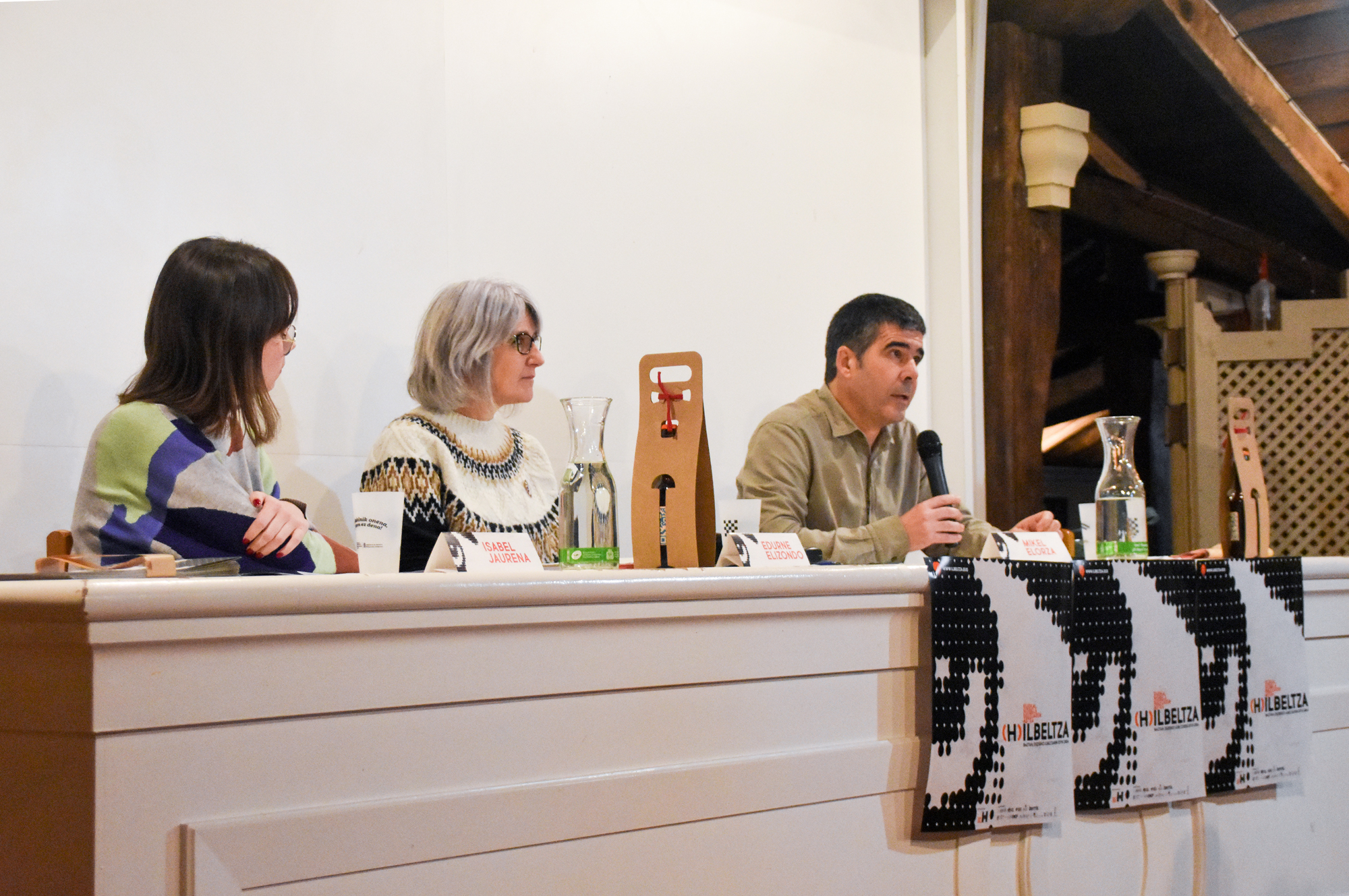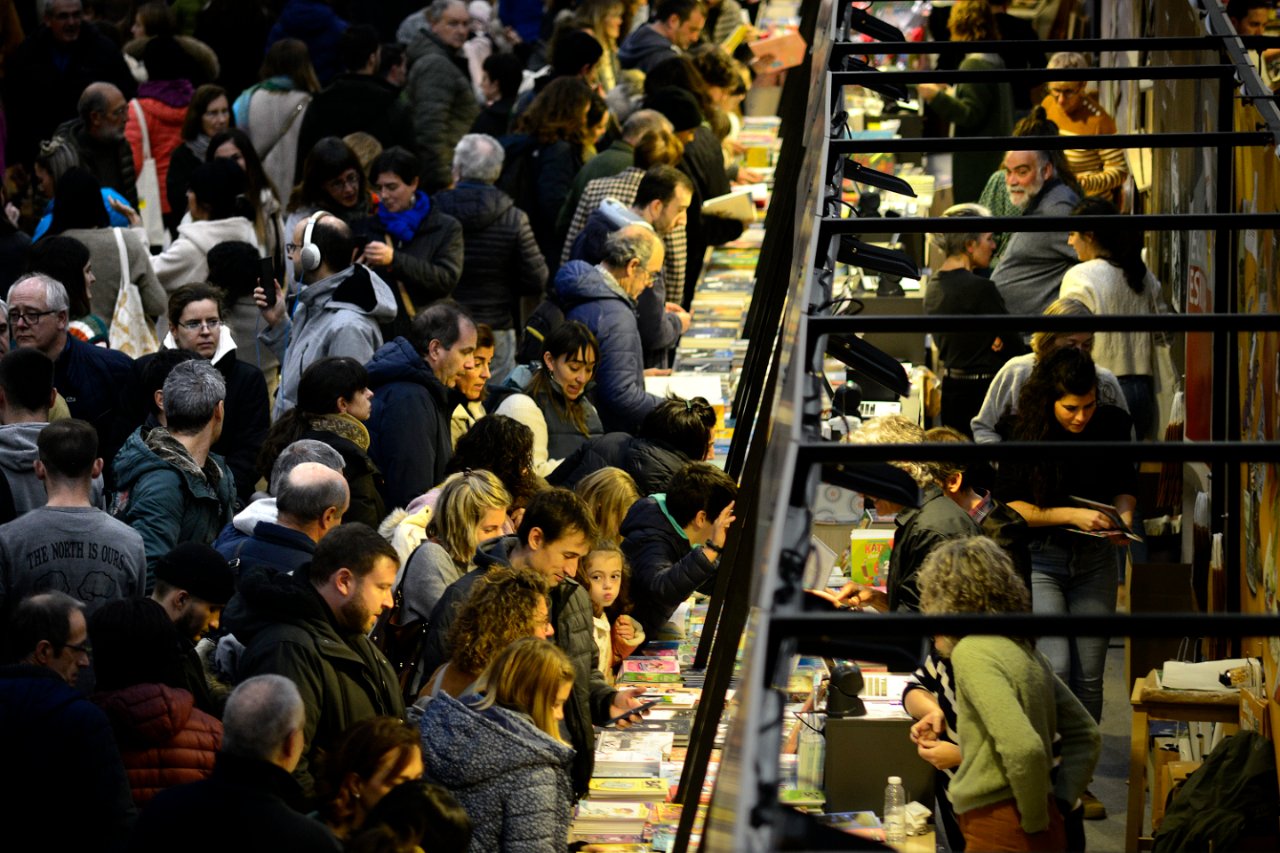"The presence of Basque culture in the media is ridiculous in terms of quality and quantity"
- The writer and art critic Xabier Gezarain Etxaniz (Peralta, 1975) has just launched a collection of essays on contemporary Basque art called ‘Zulia’. In order to disseminate knowledge of the recent history of the Basque Country, the Tene Mujika Fellowship, awarded by the City Council of Deba and the publishing house Beste, has worked on the study of 23 works of art. In it, focusing on them, he researched the relations between contemporary Basque art and society. In the framework of this book of essays, we talked with him about art, culture, literature, society and the current state of the Basque language.

The “Hole” has been the result of winning the Tene Mujika Scholarship in 2012. In it, you talk about the recent history of the Basque Country, choosing 23 Basque works of art for this purpose. Your work has been extended for six years. Was the test difficult?
Writing is always a difficult task. The need to write and publish something creates a special responsibility, because that is something that will stop there. There are several reasons that have prolonged my research: one of them has been the desire to work with other things and to receive the context of each work of art in the best way possible. In addition, the problem with books like “El Hueco” is that they are works that never end. That is, assume a constant reading, and ultimately, those that force you to include everything.
The photo that appears on the cover of the book is a work of art by Ibon Aranberri from the inside of a cave in the area of Arantzazu. Why that and not another one?
Well, for several reasons. On the one hand, because at first I thought it was a full moon or a beautiful and appropriate image that it can give, and on the other hand, because for me this work of art has many things inside it. On the one hand, the fact that its action is simple: to cover the entrance of a cave with a metal sheet, giving a hole for bats, because Ibon Aranberri did not want it to become a place for peregrination. And, above all, because of the reading he has: In the 60th Harmarkada it was sensible and normal to walk with proclamations against the oppression of Basque culture, lived by a historical culture that comes from caves. But to symbolize that we still cannot continue with this discourse today, what Ibon Aranberri does with this work of art is to close that era. It is not just any cave, but one in which archaeological remains were found, that is, a cave in which man lived. So you cover that cavern, but by giving up a hole for bats, you're talking about the damage that man is doing to the planet. With this work he denies entry to the human being, but not to the animals that live inside, showing their respect to them. And finally, what completely envelops this work of art is: The difference between the strong presence of art in Basque culture in the 1960s and the fact that it is almost extinct today.
You have been exposed to the opinion of those who say that the contemporary art cultivated in the “Hole” is far from people and has nothing to do with our lives...
Oh, yeah, yeah. The works of art that I have studied in “The Hole” do not seem to me to be something distant from society. It seems to me that it is not possible that the work of all these artists is so little valued, with what they tell being completely current and when it comes to questions to our society. I see them totally linked to our society, to reality, to historical changes and to the context. And today it seems that contemporary art is an incomprehensible thing, something that lives in its own world, without any connection with our society. And I don’t see it that way at all.
In the book’s essay “Farewell Lords” you say the following: “If there is a clear milestone in the recent history of the Basque Country, that is the day that ETA left the armed struggle.” What has been the impact of this action on the transformation of Basque society?
I don’t think things start to change when ETA says it lays down weapons, and that’s what I’ve tried to explain in the book. Although this prediction is an important milestone, I consider this change to be something that comes from before and continues afterwards. There are many things that determine the change of a society, such as when ETA recently announced its dissolution. Society will not suddenly begin to change after this prediction, because there are already many other factors that are driving change internally and will continue to change later.
5. In the exhibition that Asier Mendizabal set up in Pasaia in 2004 as part of the manifesto, together with a handmade zodiac, it is said that a short video entitled “What does the people want?” could be seen there. This is what you call a book essay. What are the demands of the Basque society at the moment?
The holiday season. “It’s up to us” will organize the human chain and people will go and everything you want. But today’s Basque society doesn’t know what it is willing to give up for something. My impression is that everything has become very individualistic, that you have to fight for yourself in this world, for your work, for your life, etc. And for the collective struggle, the strength is lacking.
In the first essay of the book, you talk about the metaphorical meaning of “closing the hole”, of extracting history. Because you say that Oteiza was killed by Ibon Aranberri. To what extent do works of art serve to close times and open new ones?
Absolutely, absolutely, absolutely. The function of a work of art is, above all, symbolic. That is to say, that which you have not been able to say otherwise, because you have not guessed it with words, is something that serves to say and/or to unite two elements or epochs that cannot be united. Even etymologically. It is something that unites a symbol. This is the greatest power of a work of art, which cannot be said otherwise symbolically. And I think Ibon Aranberri’s “The Hole” achieves that.
Throughout the book you throw out a series of rhetorical questions, among which the one that closes the “Prologue” is the following: “History is absolutely fiction, narrative, narrative. And the question is, is art fiction?” Is that how it is?
I always doubted there. When you write a novel, that's fiction and that's it. Another thing is how much truth there is in that fiction. Probably more than a story that sells as truth. There is probably more truth in a fiction than in some news programs like “Today”. What is “Today”? The format of the TV to tell what happened today. What is presented as fiction usually has more truth in it than what is presented as truth. Art also has something special, which is that it’s not even fiction. That is to say, the fact that Ibon Aranberri has covered a hole is a real action, he has placed a real metal sheet in a place where it exists. On the one hand, it is a symbolic artifact, but on the other hand, it is not a fictional thing; it is not an invented story.
It is often said that today’s young people are losing interest in art. Do you think so?
I don't even have a clue. I'm afraid of the tendency to idealize things, even if it's something I do myself. When they say “today’s young people don’t read” I think: “Did you read it in my day?” When you’re a college student, your interests and concerns are probably different. I think it’s a little risky to say that today’s young people are not interested in art. Did the others have it? Did you go to the museum every day? Socrates also complained to the young men of his time, imagine!
Could it be a problem to prefer a foreign culture to the local one?
I don't think that's a current thing either. It is true that now the “bombing” is greater than before. Now we have this “bombing” on mobile and before we don’t. Things from all over the world come to you at all times. And not because we're looking for them, they're coming for us. That the outside culture creates a special fascination? Yeah, but before. Only that now the amount of everything that comes to us is huge. As Belen Gopegui said, “cultural” production has increased by millions, but our potential to consume it has not increased. That is, our reading power, our seeing power, and our time have not increased. So the feeling is that you have a lot of things to consume, but you can’t get to the whole thing. And the fact that you can't get there, I think it's blocking you.
Does art have a strong presence in the Basque media?
Do you want me to tell you the truth? The ridiculous presence of Basque culture in the media is ridiculous/insignificant, both in terms of quality and quantity. I am not saying that the things that are done about culture are not of quality, but that the role that is given to culture is shameful. In other words, the fact that the news about culture in some TV news is cheerful, encouraging, optimistic is the biggest damage we can do to culture. Culture is not an ornament. Culture is one of the most important elements of how we understand life. Therefore, it should have a much more central presence and, above all, it should be given a different role. We should start by not considering culture as an extraordinary thing. I mean, it should be an axis and not a dessert. And not only in the media, but also in education and all other fields.
And the “core” of our culture: language. Do you think the U.S. has moved forward or backward in recent years?
He tells me that the imagination has gotten worse. The Basque Government and public institutions in general have been reluctant to develop an effective language policy. Because of the conflict that this would cause with non-Basques. They have always wanted to avoid this so that Spanish doesn’t feel bad. And the worst part is that you run the risk of being in a worse situation than before. It will be increasingly difficult for the Basques to be Basque because of the growing “machake”: “We all know the way”, “we all understand the way”... And we internalize it and it makes us complex. Many people, out of shame, have stopped talking to their children in Basque, that is, they have not taught them. Because they didn't want them to go through the deal that they had lived through.
Do you currently have a project in hand?
Currently I’m at the cultural table of Azpeitia with the intention of making a creative space; that is, a place of work for creators. And that's where I'm working. The building will be completed by 2019. This is the most important project I have in my hands now. Well, that and, above all, being with my people who are more important than that.
This news has been published by Maxixatzen.eus and we have brought it to LUZ thanks to the license CC-by-sa.
Joan Tartas (Sohüta, 1610 - date of unknown death) is not one of the most famous writers in the history of our letters and yet we discover good things in this “mendre piece” whose title, let us admit it from the beginning, is probably not the most commercial of the titles... [+]















ilbeltza-(1).jpg)






